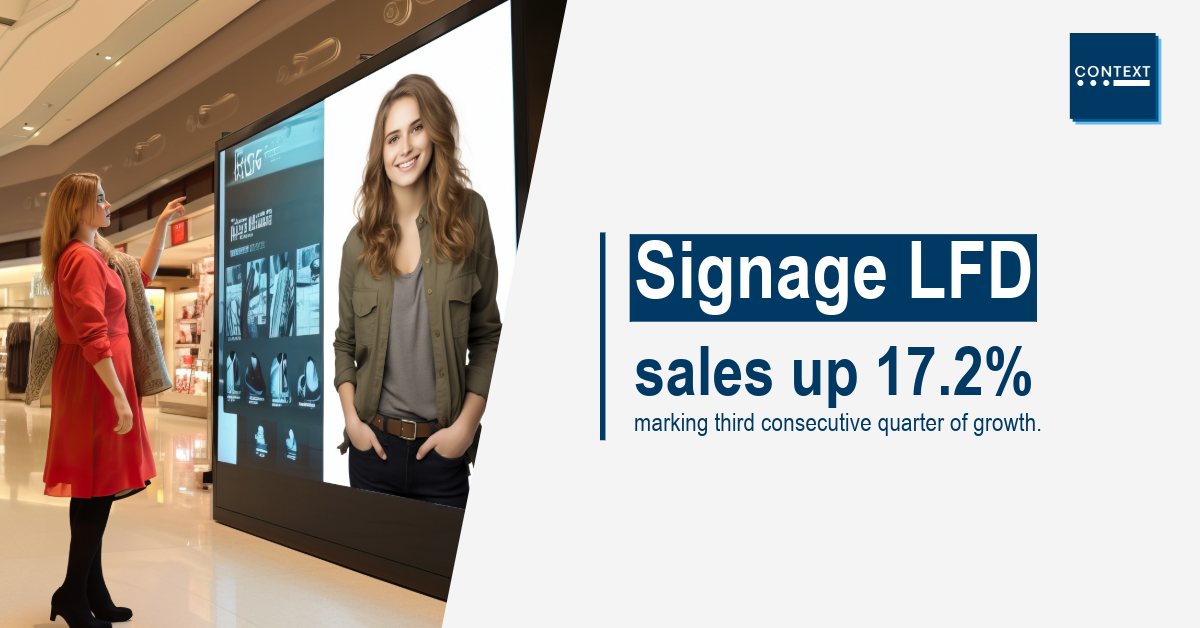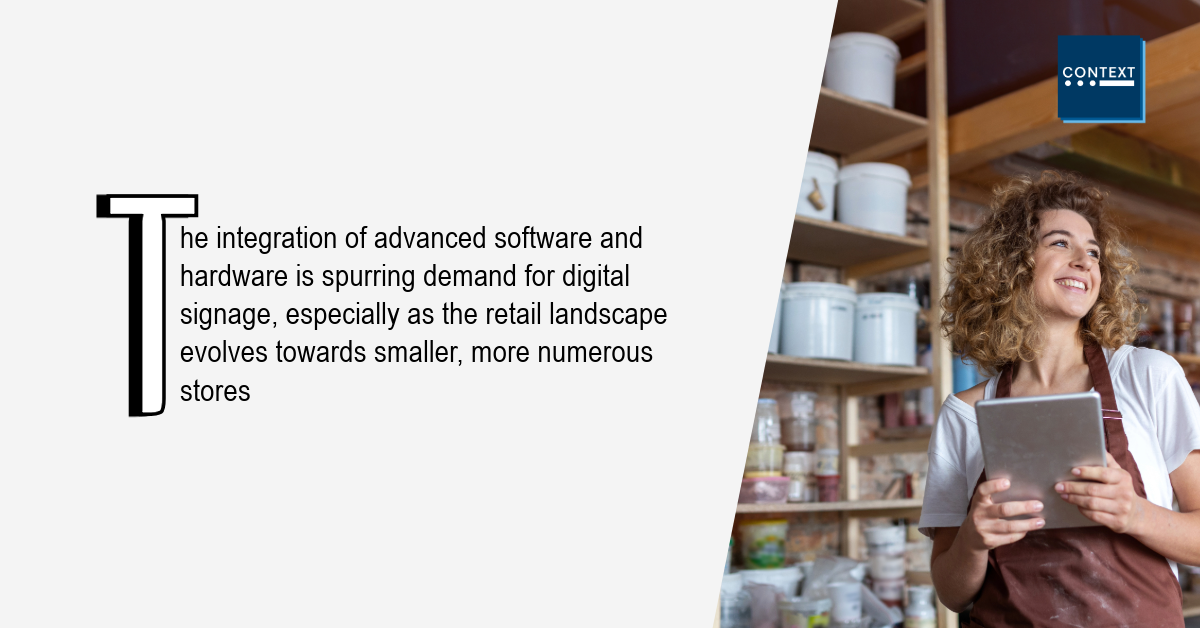The signage market in Europe has been doing very well
so far in 2024 following a difficult 2023. CONTEXT data shows that in
Q2, the quantity of signage–oriented LFDs sold through distribution
grew by 17.2% compared to last year, marking the third consecutive
quarter of growth. In addition, Q2 saw sales of LFDs into retail
chains grow by over 200%. To find out more about the drivers for this
growth, CONTEXT headed to the Samsung Synergy Powered by Salesforce
Partners event hosted at Samsung XP in King’s Cross, London.

The event included a dynamic panel discussion
featuring key industry speakers, such as Henrik Hansen from Samsung,
Giles Corbett from Cloudshelf, Alex Dollery from LSE Group, and K.C.
Watson from Quality Clouds. Attendees included representatives from
Salesforce, Overcast, Intel, ChromeOS, Alinea, and SuccessPlatform.
The event featured discussions around the transformative potential of
digital signage, aiming to shift from traditional advertising to
interactive engagement points that enhance customer experiences.
Samsung’s primary focus is on transforming
digital signage into interactive customer engagement tools. This
involves a seamless integration of hardware and software, enabling
real–time personalised experiences. Key software partners include:
- SuccessPlatform: Utilises customer
data to offer personalised deals based on past purchases and
in–store behaviour.
- CloudShelf:
Displays a retailer’s entire inventory, allowing customers to
browse and purchase items not available in–store, creating
upselling opportunities.
- Overcast:
Generates relevant content for identified customers,
enhancing engagement.
These solutions leverage AI, with Intel providing
AI chips and ChromeOS serving as the operating system.
Post–Pandemic Retail Landscape
The pandemic has reshaped retail, shifting from
fears of the “fall of the high street” to recognising the importance
of brick–and–mortar stores. Retailers now favour smaller stores and
experience centres, using digital signage to enhance customer
interactions and facilitate home deliveries.
Sustainable Trade Cycles
The panel also discussed creating sustainable
trade cycles, particularly in markets like electric vehicles (EVs).
For instance, customer data collected through questionnaires can
personalise offers. Continuous engagement through connected car
displays can offer deals on maintenance and renewal, fostering
long–term customer relationships.
Samsung aims to revolutionise digital signage by
partnering with third parties to create interactive engagement points
that enhance customer experiences, drive sales, and promote
sustainable trade cycles. The integration of advanced software and
hardware is spurring demand for digital signage, especially as the
retail landscape evolves towards smaller, more numerous stores. AI
plays a crucial role in personalising content and gathering customer
data, although privacy concerns were noted.

The food sector, particularly supermarkets, has
been a pioneer in adopting technologies like self–checkout systems and
upselling during online shopping. Other retail industries are now
following suit, bringing online shopping advantages to physical
stores. However, the increasing use of PTZ (pan–tilt–zoom) cameras for
customer profiling raises privacy concerns, akin to the ubiquitous
tracking of internet cookies.
Samsung’s initiative signifies a major step
towards a more interactive, personalised, and data–driven retail
environment, highlighting the future of digital engagement in
physical spaces.
Make sure to stay in the loop with
the latest AV trends and developments by following our LinkedIn CONTEXT
Europe page and filling in your details below
to attend our weekly
webinar.